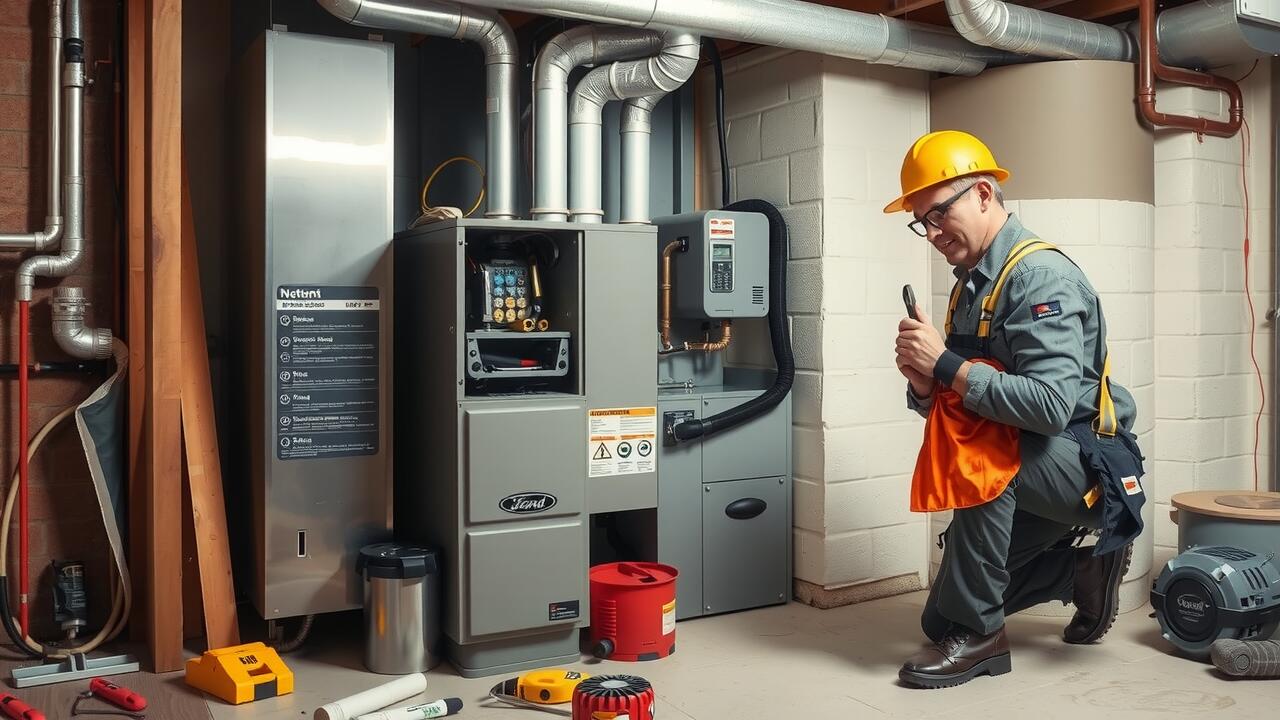
Warranty Coverage and Repair Costs
Warranty coverage plays a vital role in determining the overall cost of furnace repairs. Many manufacturers offer warranties that include parts and sometimes labor for a specified period. Understanding the specifics of your warranty can save you money when unexpected issues arise, as certain repairs may be covered fully or partially, depending on the terms. Homeowners should read the fine print and keep documentation handy to ensure they are aware of what is included in their warranty.
Furnace installation and repair costs can also fluctuate based on whether parts fall under warranty. When components fail, having a warranty can significantly reduce out-of-pocket expenses. Conversely, if a warranty has lapsed or coverage is limited, homeowners may face higher costs due to the need for replacement parts and service fees. Keeping your furnace well-maintained can also help mitigate these costs, as regular check-ups can prevent larger issues from developing that are not covered under warranty policies.
Understanding What Your Warranty Includes
A warranty for furnace installation and repair typically covers specific components and may offer varying terms depending on the manufacturer. Most warranties include critical parts such as the heat exchanger, gas valve, and blower motor. However, certain conditions apply, such as regularly scheduled maintenance and timely reporting of issues. Understanding the stipulations of your warranty can help you avoid unexpected expenses during repairs.
Additionally, some warranties extend coverage to labor costs associated with furnace repairs. This aspect can significantly reduce your out-of-pocket expenses if repairs are needed. Review your warranty documents to comprehend what is included and what is not. Knowing the terms can save you money and ensure you handle repairs appropriately, maximizing the benefits of your original purchase.
Energy Efficiency Upgrades During Repairs
Upgrading to energy-efficient components during furnace repairs can offer substantial long-term savings. Many homeowners overlook the opportunity to enhance their system’s performance while addressing necessary fixes. Incorporating modern technology into your furnace installation and repair process not only improves energy usage but also can lead to decreased utility bills.
Additionally, energy-efficient upgrades often qualify for rebates and tax incentives. Many utility companies promote these initiatives, aiming to encourage homeowners to reduce their overall energy consumption. Making these upgrades during repair time can streamline the process, ensuring that systems remain up-to-date while tackling immediate issues.
Costs and Benefits of Modernizing Your Furnace
Modernizing your furnace can lead to significant energy savings and improved efficiency. Older models often operate at lower efficiency levels, which can result in higher utility bills. By upgrading to a more energy-efficient system, homeowners can not only reduce their monthly expenses but also lower their environmental impact. This transformation often enhances comfort levels in the home while minimizing maintenance costs over time, making the initial investment more worthwhile.
In addition to energy savings, modern furnaces often come with advanced features that improve usability and performance. Smart thermostats and variable-speed blowers are just a couple of examples that can optimize heating schedules and maintain consistent temperatures. While the costs associated with furnace installation and repair can vary, the long-term benefits of having a modern, reliable system often outweigh the initial financial outlay. Investing in a new furnace system is not merely an expense; it is a step toward greater efficiency and reliability in home heating.
Emergency Repairs vs. Routine Maintenance
Emergency repairs often come with a higher price tag compared to routine maintenance. When a furnace suddenly fails during the cold months, homeowners may face extensive costs as technicians may charge more for immediate service. The urgency of the situation often leads to premium pricing for parts and labor. This can strain budgets, especially when the repair is unexpected.
Routine maintenance, on the other hand, is generally more affordable and helps prevent breakdowns. Regular check-ups can catch potential issues early, allowing for planned repairs and minimizing the chances of a sudden failure. Investing in routine services not only extends the lifespan of your furnace but can also lead to energy savings. Choosing a reliable provider for Furnace Installation and Repair can ensure that your system runs efficiently, reducing the likelihood of costly emergency situations.
Cost Differences Between Urgent and Planned Services
Emergency repairs typically come with higher costs compared to routine maintenance services. When a furnace breaks down unexpectedly, technicians often charge premium rates for immediate assistance, especially during off-hours or extreme weather conditions. This urgency can lead to inflated labor costs and additional fees that aren't usually present during scheduled maintenance. Homeowners may find themselves paying a significant markup for these urgent services, which are necessary to restore heating quickly.
In contrast, planned maintenance offers a more predictable expense. Regular check-ups and tune-ups allow homeowners to budget accordingly, often leading to discounts on services. During Furnace Installation and Repair, technicians can identify potential issues early on, helping to avoid costly emergency situations down the line. Investing in routine maintenance can therefore save money in the long run by preventing the need for urgent repairs.
FAQS
What is the average cost to repair a furnace?
The average cost to fix a furnace typically ranges from $150 to $1,500, depending on the nature of the repair and the type of furnace.
Are there any warranties that cover furnace repairs?
Yes, many furnaces come with warranties that may cover parts and labor for a certain period. It's essential to check your warranty details to understand what is included.
How can energy efficiency upgrades affect furnace repair costs?
Upgrading to more energy-efficient components during repairs can lead to higher upfront costs but can result in savings on energy bills over time.
What is the difference between emergency repairs and routine maintenance for furnaces?
Emergency repairs typically involve urgent issues that need immediate attention and can be more expensive, while routine maintenance is scheduled and generally costs less, focusing on preventative care.
How can I minimize furnace repair costs?
Regular maintenance, timely repairs, and considering energy-efficient upgrades can help minimize overall furnace repair costs while extending the lifespan of your unit.
